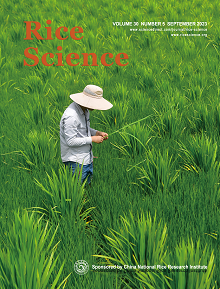This investigation aimed to establish the geographical traceability of Malaysian rice by assessing the elemental composition in paddy soil. Multi-element determination in combination with a chemometric approach was applied to evaluate the elemental concentrations of paddy soil from granaries cultivated with the same rice variety and to assess the relationship between elements in the soil and rice (SAR) system. A total of 29 elements (aluminum, arsenic, barium, bromine, calcium, chlorine, cobalt, chromium, cesium, europium, iron, gallium, hafnium, potassium, lanthanum, lutetium, magnesium, manganese, sodium, rubidium, antimony, scandium, samarium, thorium, titanium, uranium, vanadium, ytterbium and zinc) were successfully determined in paddy soil from Kedah, Selangor and Langkawi by neutron activation analysis. A significant difference (P < 0.05) between 18 elements in the soil samples was obtained. The chemometric approaches of principal component and linear discriminant analyses demonstrated clear discrimination and highly corrected classification (100%) of the soil samples. A high classification (98.1%) was also achieved by assessing 10 elements (aluminum, arsenic, bromine, chlorine, potassium, magnesium, manganese, sodium, rubidium and zinc), which similarly applied to rice geographical origin determination. Similar elements in SAR were also observed for differences in the pattern of correlation and bioaccumulation factor between the granaries. Furthermore, the generalized Procrustes analysis showed a 98% consensus between SAR and clear differences between the studied regions. The canonical correlation analysis demonstrated a significant correlation between the chemical profile of SAR (r2 = 0.88, P < 0.001). Therefore, the current work model provides a reliable assessment to establish rice provenance.

